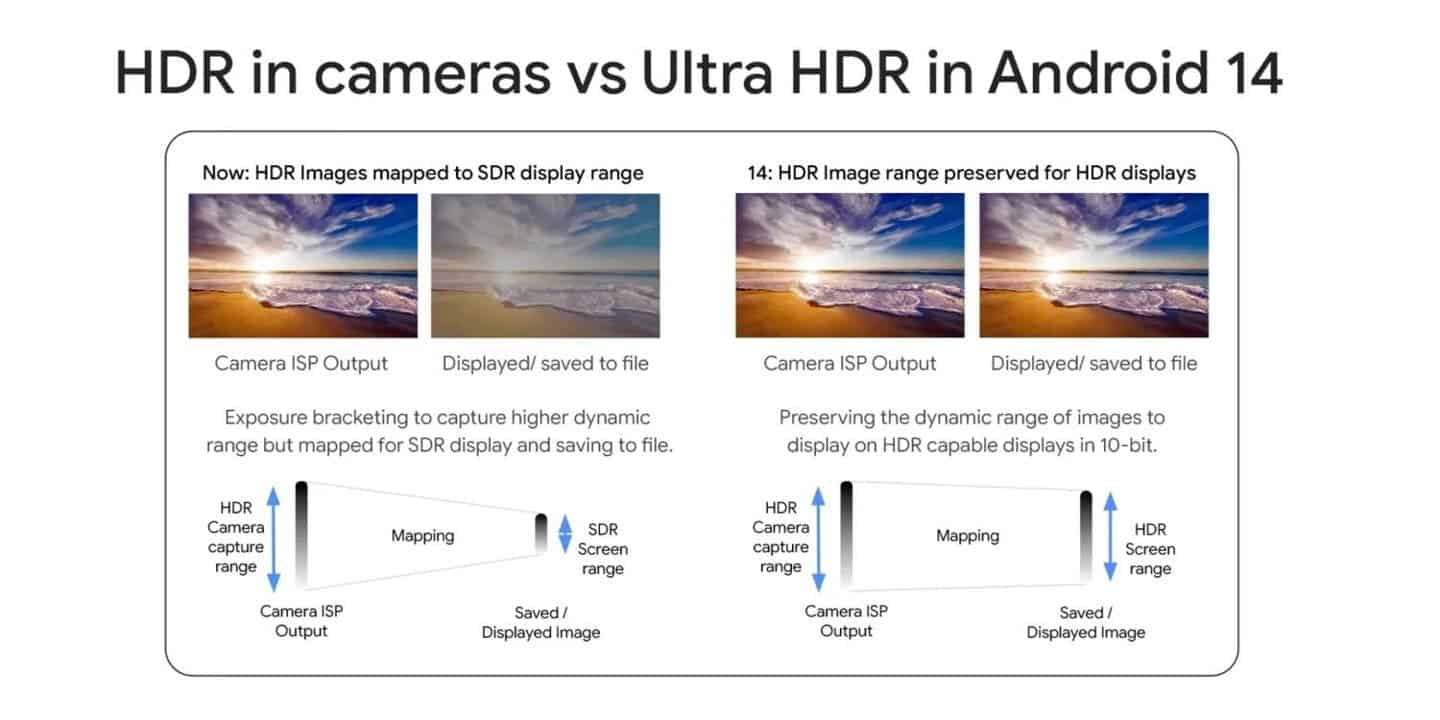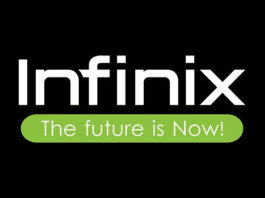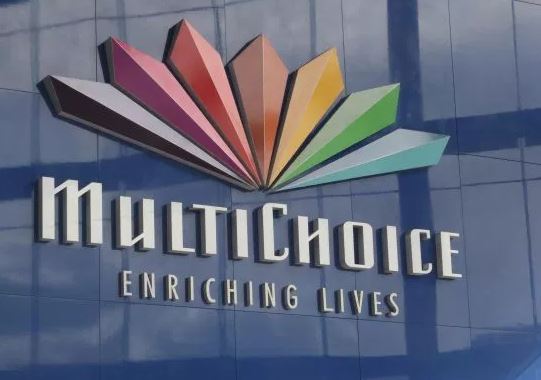At the I/O 2023 developer conference held by Google early this morning, the company did not spend too much time on the new functions/new features of the Android 14 system. However, it was still shared in the follow – up meeting and there is a lot of new content.

A report from 9to5Google reveals the new functions/new features of the Android 14 system. Below are some of the new features that we should expect with the Android 14 update.
Table of Interests
Android 14 New Features
Ultra HDR
The current Android version already supports HDR video. Also, in Android 14, HDR photography will be further enhanced. Furthermore, the new system will also come with the Ultra HDR format. This format will be backwards compatible with JPEG. Photos taken with the Ultra HDR format enabled will be stored in a 10-bit high dynamic range. Due to the need for hardware support, the initial launch is limited to Android high – end models.

Google hopes that the Ultra HDR format will become the default format for built – in camera apps and third – party camera apps. Google Photos will support browsing, backup, editing, sharing and downloading in Ultra HDR format. The Google Android team has had talks with Qualcomm and other brands to optimize hardware and support Ultra HDR on other device forms.

Privacy and Security
In terms of security and privacy, apps can be granted access to only some/select media. Also, access prompts will ask developers to explain when and why location data is shared with third – party brands. Users will get a monthly roundup of Location Data Sharing Updates.

The new feature of Android 14 is that it supports sharing part of the screen in screen – casting. This will allow users to choose to share a single app or full screen.

Health Connect is now built into Android via a Google Play system update instead of an app in the Play Store.

Material You + Design
In terms of design, Android 14 brings a new black and white theme (Monochrome). Android 14 also improves the color fidelity of Dynamic Color. This can generate a wider range of colors and thus become more vivid.

Materials You also bring a high – contrast mode and a medium – contrast mode.
Content – based dynamic colors allow buttons and other components to adapt to the image displayed on the screen. For example, a Now Playing page that changes color based on the current song’s album art.
Android 14 also updates the sharing interface, and the form options can be custom by the developer.

Android 14 Beta 2 Adds Wi-Fi Hotspot Frequency Band Selection Function
The Android 14 Beta 2 is now official and in addition to fixing some bugs, it also adds some new features. One of the new features is to allow users to select the frequency band of Wi-Fi hotspots.
This feature is hidden at the moment and needs to be manually enabled on rooted devices. It is important to note that this function is available in the system of many Chinese mobile phone brands.

A Wi-Fi hotspot is a feature that turns your phone into a wireless router, allowing other devices to connect to the Internet through your phone. Different Wi-Fi hotspot frequency bands have different patterns. For example, the 2.4GHz frequency band has better compatibility and wider coverage, but the speed is slower.
The 5GHz frequency band is faster, but the coverage area is smaller, and it does not support all devices. The Wi-Fi hotspot function of Android 14 Beta 2 has added a “speed and compatibility” option. This allows users to choose the appropriate frequency band according to their needs.
In addition to the 2.4GHz and 5GHz frequency bands, Android 14 Beta 2 also displays a 6GHz frequency band, but it is currently grayed out and cannot be selected. That could mean some future Pixel phones will support 6GHz Wi-Fi hotspots.
They are faster but have less range and less compatibility. Android 14 Beta 2 is the second version of the Android 14 beta, and the stable version will be official in June.






